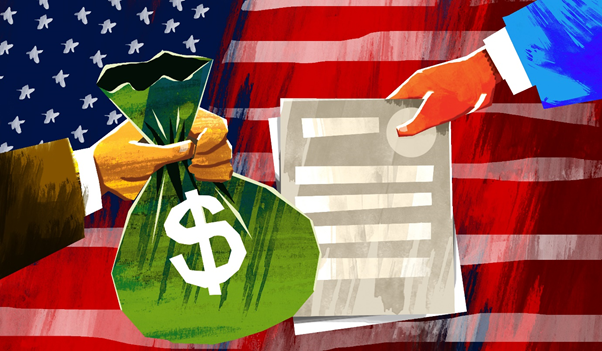What do you mean by De Minimis Tax Rule?
The de minimis tax rule sets the edge at which a markdown bond ought to be considered as a capital increase instead of ordinary income. The standard expresses that a discount which is less than 0.25% of the face value of the bond between its purchase and maturity is too little to be in any way thought to be a market rebate for tax purposes. Instead, De minimis is Latin for “about negligible things”. The legal history of de minimis traces back to the 15th Century.

Copyright © 2021 Kalkine Media
Understanding De Minimis Tax Rule
Under the de minimis tax rule, if municipal security is bought for a negligible discount, it depends on capital gains tax instead of the (generally higher) regular annual tax rate.
As indicated by the Internal Revenue Service (IRS), a minimum discount is the amount which less than 0.25% of the par value of the bond multiplied by the total number of years between the acquisition and the maturity of the security. It is too tiny to be taken into consideration as a market discount for tax obligations.

Copyright © 2021 Kalkine Media
Calculation of the De Minimis Tax Rule
To decide if a municipal bond depends on the capital increases duty or joint personal assessment utilising the de minimis tax rule, reduce the bond value by 0.25%, and duplicate the outcome by the quantity of entire years between the bond's buy date and the maturity date. Deduct the de minimis sum from the bond's par value.
If this sum is higher than the buying price of the discount security, the bought security depends on the conventional income tax rate. If vice versa, capital gains tax needs to be paid.
At the end of the day, if the market discount is not precisely the de minimis sum, the discount on the security is treated as a capital gain upon its deal or recovery instead of as standard pay.
For example, if you are allowed a 10-year bond with an assumed worth of US $1,500, and it matures in six years. What type of expense will be applied once the bond is sold? The means are:
- US $1,500 x .0025 = $3.75
- US $3.75 * 6 years = 22.50
- US $1,5000 – $22.75 = $1,447.50 (de minimis edge)
The estimation over that the de minimis limit is US $1,477.50. We can figure out which type of expense is applied depending on the price tag with the figure. If the price is above $1,477.50, it will be treated as a capital gains charge. If the price tag is underneath $1,477.50, it will be treated as regular income tax.
The two types of taxes are mentioned below:
Capital Gains Tax (CGT): The capital gains tax is a type of assessment applied when the benefit is acquired from the offer of non-inventory resources like bonds and property. In the US, short capital gains, i.e., resources bought and sold inside a year, are burdened equivalent to regular income tax assessment and more intensely than long haul capital gains.
Ordinary Income Tax: The regular income tax assessment is a type of expense applied to pay rates, compensation, commissions, and so on. Aside from the fundamental types of pay, ordinary income tax can be used for profits, organisations, eminences, and in any event, betting rewards.
Frequently Asked Questions
What do you mean by De Minimis Safe Harbor?
De minimis safe harbour alludes to a yearly tax expense election that allows citizens to deduct different expenses under the income tax regulations.
It permits companies that plan fiscal reports to deduct up to US $2,500. The figure can reach US $5,000 if an organisation utilises an applicable financial statement (AFS). An AFS is a fiscal report enrolled by the Securities and Exchange Commission (SEC) or reviewed by a CPA firm.
What are the fringe benefits of the de minimis rule?
The de minimis charge rule likewise applies to fringe benefits offered by employers. Since the de minimis benefits offered are so small, it will be preposterous to represent them, and they are absolved from tax collection.
These are a portion of the primary de minimis benefits:
- Food items brought into the work environment to build worker spirit;
- Occasional gifts offered by the firm for their representatives;
- Tickets for exceptional work occasions or certain events;
- Individual utilisation of office gear like the scanner;
- Periodic feast compensation is given to remarkable representatives;
- Transport costs for representatives who decide to stay at work longer than required;
- Mixed drink gatherings or uncommon occasions coordinated to support worker inspiration;
De minimis benefits can't expect a substantial financial worth. As such, cash can't be given as a blessing to expand assurance without it being burdened. Because of the recurrence and little money-related value of the things recorded above, de minimis benefits stay away from tax assessment.
Why should firms incur a cost instead of capitalising it?
While making year-end fiscal summaries, accountants are confronted with the choice to expense or capitalise a cost. As referenced above, the de minimis safe harbour stresses allotting expenses of resources as an expense. The reasons are:
Capitalisation: When a firm capitalises on an expense, it is coordinated towards capital consumptions. The cost will be represented as a resource on the accounting report and subject to devaluation cost. Thus, capitalisation brings down the future total income of a firm.
Discounting: When a cost is expensed, it is added to the organisation's pay articulation and is deducted from income, decreasing income. It may not appear to be gainful. However, the discounting of expenses diminishes the general personal taxation rate. Therefore, expensing a cost reduces the total assets and shareholders' equity.
 Please wait processing your request...
Please wait processing your request...